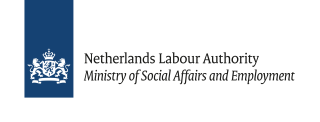Falls from height are by far the most common type of accident in the construction sector. Many accidents still occur with mobile scaffolding. As an employer, you are obliged to minimise the risks of falls from height as much as possible.
Causes
People fall from mobile scaffolding because, for example, the railings are missing or because they lose their balance while climbing up the outside. lt also happens that the mobile scaffolding is unstable and falls over with someone on it. Accidents also occur in which people are hit by objects falling from mobile scaffolding.
Accidents involving mobile scaffolding often happen because:
- The mobile scaffolding manual is not followed.
- The equipment is used incorrectly.
- The correct safety measures are not taken.
lf an inspection visit reveals a risk of falling, a fine will inevitably follow and the Netherlands Labour Authority will shut down the work.
ldentifying risks
Healthy and safe work starts with good preparation. The decision to use mobile scaffolding for temporary work at height is made on the basis of a risk inventory and evaluation (Rl&E) and the accompanying Action Plan (AP). By recognising and controlling the risks, you can work safely, even with mobile scaffolding.
An Rl&E (with AP) is a legal obligation, even for companies with few employees. This also applies when self-employed persons are used.
lf the Rl&E and AP are incomplete - for example, because not all risks or measures are described - a warning will be issued. lf a company does not have an Rl&E and AP, the Labour Authority may impose a fine immediately.
More information?
Volandis' A-sheet on Mobile scaffolding (Dutch) - including a handy checklist - contains clear information on safe assembly. lf you work according to this A-sheet, you will comply with the legal requirements for working safely with mobile scaffolding. You may also assembie the mobile scaffolding in a different way than described in the A-sheet. In that case, however, you must be able to demonstrate that your own method offers at least the same level of protection.
Employers who want to know more about the Rl&E and AP can visit the Healthy and safe working self-inspection (Dutch), for example. This provides employers with insight into the status of the Rl&E and AP on the basis of a number of questions.
What does the Labour Authority do?
The Netherlands Labour Authority checks whether work in the construction and maintenance sector is carried out in a healthy, safe and fair manner. And what you, as an employer, do to guarantee this in the langer term. The Labour Authority will also visit you after a report of a workplace accident.

